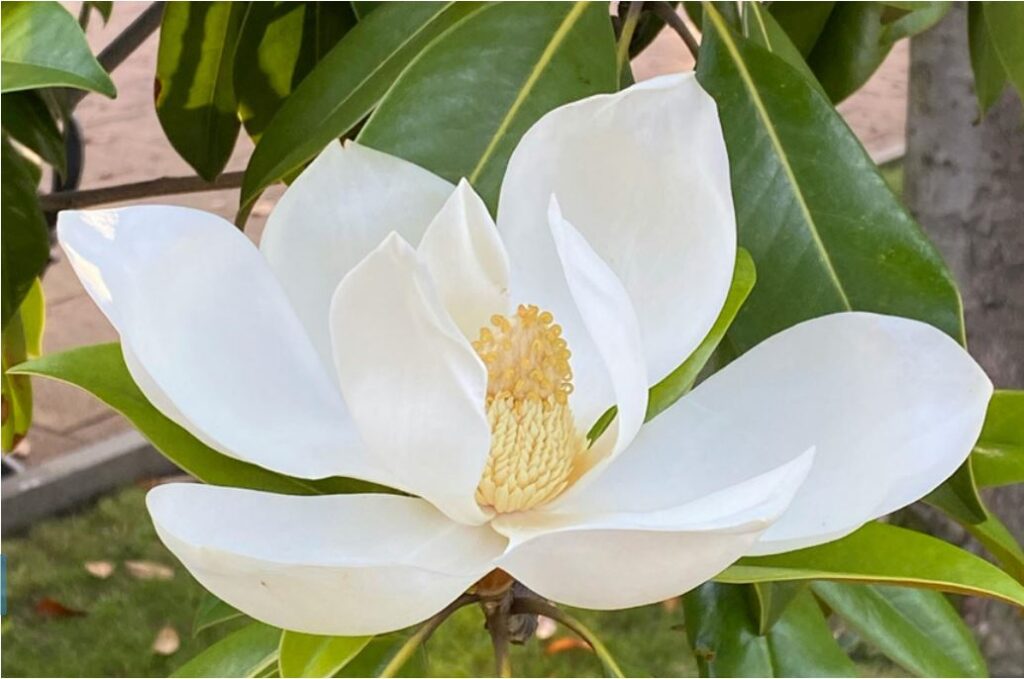May 31st, 2024Something fine and fragrant: Glen, about the house

Whenever the topic of bringing added fragrance to our gardens our thoughts go naturally to the old faithfuls – roses, daphne, lavender etc.
We usually overlook the many varieties of trees and large shrubs that could also bring added fragrance as well as shade and shelter for the smaller, less hardy varieties.
And we sometimes also forget about them for the protection they offer from the direct rays of our summer sun and the bonus of perfumed flowers or aromatic leaves.
This group is all the more important, particularly where you are anxious to have shade and, at the same time, perfumed flowers and/or foliage.
Despite the relatively small size of ground left to the garden after the carport or garage, clothesline and the all-important sandpit are given pride of place, there still should be space for at least one large, multi-purpose tree, and in my books that’s the Lisbon lemon.
They are evergreen, fast-growing, with thickly spread lush green leaves, a glorious fragrance and white blossoms, and best of all, they work their magic in drinks, salads and many other culinary delights.
For those who simply don’t have room for the Lisbon, check your local nursery and see if they stock smaller-growing varieties.
The diminutive size of the tree does little to the quality of the fruit or perfume of the flowers. If you wish to grow a Lisbon lemon but your backyard vegetable plot is already overcrowded there’s nothing in the rule books barring you from making it a front garden feature.
Another highly scented, scaled-down choice with miniature oranges for fruit is the cumquat. Highly perfumed flowers are followed by leprachaun cricket-ball sized fruit.
And according to young Paddington Bear it can produce impossible to beat marmalade. If you can’t find a suitable spot in the front garden beds there’s always room for a large potted citrus on a pathway somewhere, especially if it’s a cumquat.
Scented blossom
Amongst the trees which produce scented flowers probably the citrus varieties are the best known but least planted for that purpose.
More than likely that is because citrus have always been regarded as production units and belong in the kitchen garden.
Whilst the ordinary orange, lemon or grapefruit are a bit too large for the kitchen garden, they could certainly find their place in the front garden as a bonus to their lush, green foliage as their white flowers fill the air with a magnificent scent when the tree is covered with bloom.
A tall-growing deciduous tree, tilia, classically known as the Linden tree, is well known for its scented flowers and while perhaps a little large for small gardens (depending on the variety chosen) it is great for open spaces and park plantings.
The heart-shaped leaves, which depending on species, can vary from 5-12 centimetres in diameter, are followed by pendulous trusses of small, yellow, scented flowers. Despite the size of some species it is an attractive tree and deserves to be more widely planted.
Outstanding amongst the scented flowered trees is magnolia grandiflora, a beautiful, highly perfumed tree with large glossy leaves and in summer a profusion of large, bowl-shaped, sweetly scented, ivory-coloured blooms.
Got a gardening query? Email glenzgarden@gmail.com










